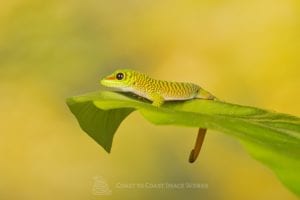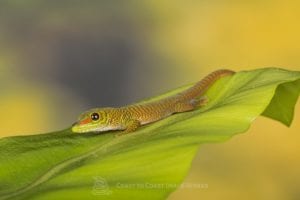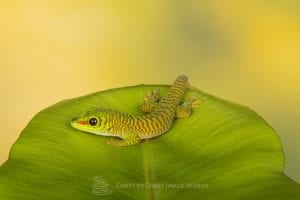 A large species of Day gecko, dwarfing most of it’s relatives at up to around 25-30cm in total length. They are a most impressive looking gecko species, bright intense green, many having red bars or spots. Its easy to see why this species is so popular, they are truly beautiful. They come from Madagascar, but have found themselves establishing colonies away from their native lands in such places as Florida. As the name suggests they are a daytime active species (diurnal) in contrast to many of the gecko species being nocturnal.
A large species of Day gecko, dwarfing most of it’s relatives at up to around 25-30cm in total length. They are a most impressive looking gecko species, bright intense green, many having red bars or spots. Its easy to see why this species is so popular, they are truly beautiful. They come from Madagascar, but have found themselves establishing colonies away from their native lands in such places as Florida. As the name suggests they are a daytime active species (diurnal) in contrast to many of the gecko species being nocturnal.
They eat a mixture of insects, and also sweet nectar. This is easy to replicate in captivity with the huge variety of suitably sized livefood – crickets, locusts, waxworms etc. To satisfy their ‘sweet tooth’ there are many mixes available, and also pre-mixed jelly pots. As with any exotic animal the key to success is a balanced diet, provide a good mix to vary the diet and also use a good quality balanced reptile multi-vitamin supplement powder. Don’t forget to gut load the livefood too, this is simply feeding the livefood correctly, again with a balanced commercially available diet.
This species likes a higher level of humidity, so always house in a glass vivarium as you will need to spray the vivarium down on a daily basis. Always provide a tall vivarium, this species climbs, and has ‘sticky’ feet enabling it to climb easily – including glass. A mesh lidded vivarium will help keeping an adequate airflow. I’d always recommend a fully natural planted style, sometimes more likely to be called a terrarium, allowing for a more eco-friendly balanced life. Have a look at my other blogs for further details. But briefly a mix of plants, some will be climbers, others are tall and planted in the substrate. Include branches, and a water bowl – you can add woodlice and the like to keep it all naturally clean. You will then have a fascinating slice of the jungle in your living room, the ultimate way of keeping Day geckos.
 Of course you will need to provide heating and lighting. This is where it can get a little confusing, there is so much conflicting advice out there on the internet. They will require a basking temperature of around 32C, and a place to get to a cooler area too. There are several ways of providing heat in a vivarium, with fans for each form of heating. Personally I prefer to keep my heating and lighting completely independent for full control. For this reason I use a heater with no visible light – a ceramic heater. Some keepers love ceramics, others prefer incandescent bulbs or halogens – it’s a hotly debated topic. I use a thermostat to control the heat output. Lighting wise I would always use a T5 UVB fluorescent tube, around a 10-12{cb5d0a8cf0c44aef2db327d9ab0dba08dd09aed1126b509e5fa01d3aaa87fe47} power level. Whilst we are talking about electrics, I’d also provide a misting system too. These can be quite cheap to buy nowadays (up to very expensive) but either way an electric mist system will make keeping this species much easier.
Of course you will need to provide heating and lighting. This is where it can get a little confusing, there is so much conflicting advice out there on the internet. They will require a basking temperature of around 32C, and a place to get to a cooler area too. There are several ways of providing heat in a vivarium, with fans for each form of heating. Personally I prefer to keep my heating and lighting completely independent for full control. For this reason I use a heater with no visible light – a ceramic heater. Some keepers love ceramics, others prefer incandescent bulbs or halogens – it’s a hotly debated topic. I use a thermostat to control the heat output. Lighting wise I would always use a T5 UVB fluorescent tube, around a 10-12{cb5d0a8cf0c44aef2db327d9ab0dba08dd09aed1126b509e5fa01d3aaa87fe47} power level. Whilst we are talking about electrics, I’d also provide a misting system too. These can be quite cheap to buy nowadays (up to very expensive) but either way an electric mist system will make keeping this species much easier.
One of my personal favourite gecko species, active during the day, decent size and ever so characterful. Here at Coast to Coast Exotics we often have this species in, bred in captivity, and often as babies so you can grow them yourself. A true gem of a reptile species.
All pictures are of babies bred here at Coast to Coast Exotics
